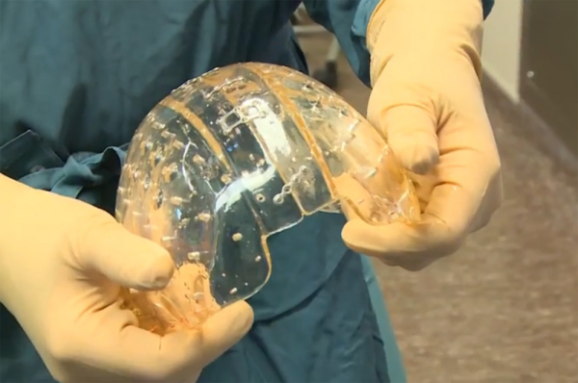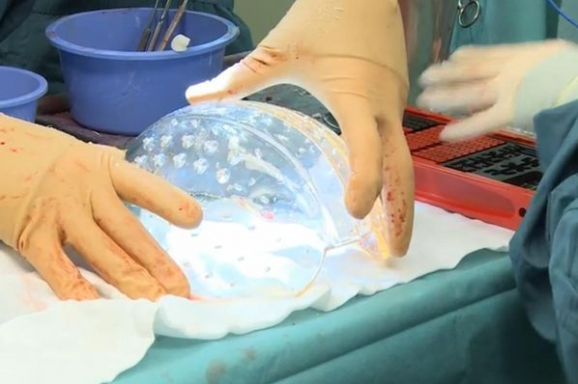Doctors Implant World’s First 3D-Printed Skull
This article is more than 2 years old
 Sometimes my posts read like one big love letter to 3D printing. I never specifically planned or intended for that to be the case, but when you write about science and technology, it’s next to impossible to avoid. No matter how much I learn and write about 3D printing, I’m still awed by each new advancement and application. Case in point: a Dutch patient now has a 3D-printed skull.
Sometimes my posts read like one big love letter to 3D printing. I never specifically planned or intended for that to be the case, but when you write about science and technology, it’s next to impossible to avoid. No matter how much I learn and write about 3D printing, I’m still awed by each new advancement and application. Case in point: a Dutch patient now has a 3D-printed skull.
A 22-year-old Dutch woman received the world’s first 3D-printed cranium as a replacement for her defunct one — due to a disease, her skull was thickening, causing pressure to build up against the brain. A normal skull is about 1.5 cm thick, but hers had already reached 5 cm. Her vision was going, as was her ability to use her facial muscles. It was only a matter of time before her other brain functions stopped working, after which she would die. And that’s what would have happened, if not for 3D printing.
Bon Verweij, a surgeon at the Netherland’s UMC Ultrecht known for 3D reconstructions and 3D printing of skulls lead the team that designed the patient’s new skull and performed the operation. They first created a 3D model of the new skull and the plastic pieces were printed by an Australian firm. The hospital had previously implanted 3D-printed sections of skull, but never the entire thing.

3D-printed implants offer benefits over conventional implants, partially because they don’t rely on the bone cement, typically made of acrylic polymers. Instead of adhering pieces together, 3D printing allows customizable implants of exactly the right shape and size. Verweij says that “Patients’ brain function often recovers better than the traditional methods.” The technique could also be used for patients with bone cancers or who have suffered head trauma.
The revolutionary total skull replacement took 23 hours to complete, but according to the hospital it was hugely successful. The operation actually took place three months ago, but the hospital waited to make the announcement because they wanted to be sure it was the success they initially thought it was. Now, the patient has regained her eyesight and has returned to work, bearing no signs of having had a complete cranial replacement — unless you count her good health.
So while scientists haven’t mastered bioprinting just yet, there is plenty to celebrate in the meantime.












